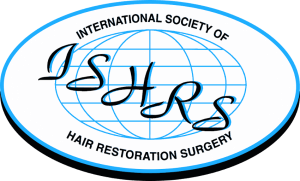Forehead reduction surgery, also known as hairline lowering surgery, is a cosmetic procedure aimed at reducing the size of the forehead by lowering the hairline. While discomfort is inevitable post-surgery, advancements in medical techniques and pain management have significantly minimised the pain associated with this procedure.
Understanding Forehead Reduction Surgery
What is forehead reduction surgery?
Forehead reduction surgery involves the surgical lowering of the hairline to create a more proportional facial appearance. By removing a portion of the forehead skin, the hairline is brought forward, resulting in a more aesthetically pleasing forehead-to-face ratio.
Risks and Complications
Potential risks associated with forehead reduction
Like any surgical procedure, forehead reduction surgery carries certain risks and potential complications. These may include infection, bleeding, scarring, nerve damage, and asymmetry. However, with proper pre-operative evaluation and skilled surgical techniques, the risk of complications can be minimised.
Recovery Process
Steps involved in the recovery process
The recovery period following forehead reduction surgery typically involves swelling, bruising, and discomfort. Patients are advised to rest and avoid strenuous activities during the initial weeks post-surgery. It’s essential to follow the post-operative care instructions provided by your surgeon to facilitate a smooth recovery process.
Pain Management Techniques
Strategies to alleviate pain post-surgery
While discomfort is expected after forehead reduction surgery, various pain management techniques can help alleviate discomfort. These may include prescribed pain medications, cold compresses, and keeping the head elevated during the initial stages of recovery. Additionally, maintaining proper hydration and nutrition can aid in the healing process.
Long-Term Effects
Impact of forehead reduction surgery in the long run
Forehead reduction surgery offers long-term benefits in terms of enhanced facial harmony and improved self-confidence. While initial discomfort and swelling subside within a few weeks, the aesthetic results of the procedure become more apparent over time, leading to overall satisfaction with the outcome.
FAQs
How soon can I resume normal activities after forehead reduction surgery?
Patients can typically resume light activities within a week post-surgery, but strenuous activities should be avoided for several weeks to ensure proper healing.
Will I experience hair loss after forehead reduction surgery?
Hair loss is a common concern among patients undergoing forehead reduction surgery. However, with meticulous surgical techniques, hair loss can be minimised, and in many cases, hair growth may resume in the treated areas.
What are the factors that influence the pain level during forehead reduction surgery?
The pain level experienced during forehead reduction surgery can vary depending on individual pain tolerance, surgical technique, and post-operative care. Effective pain management strategies are employed to minimise discomfort and facilitate a smooth recovery.
Is forehead reduction surgery suitable for everyone?
Forehead reduction surgery is typically recommended for individuals with a high hairline or disproportionate forehead-to-face ratio. However, candidacy for the procedure is determined through a comprehensive evaluation by a qualified surgeon, taking into account factors such as medical history, aesthetic goals, and expectations.
Are there any non-surgical alternatives to forehead reduction?
While surgical forehead reduction is the most effective method for achieving significant hairline lowering, non-surgical alternatives such as hairline advancement with injectable fillers may provide temporary improvements for select individuals.
What is the expected outcome of forehead reduction surgery?
The expected outcome of forehead reduction surgery is a lower, more aesthetically pleasing hairline that complements the overall facial features. Results may vary depending on individual anatomy, surgical technique, and post-operative care.
Conclusion
In conclusion, forehead reduction surgery is a viable option for individuals seeking to enhance their facial aesthetics and achieve a more balanced appearance. While discomfort may be experienced during the initial stages of recovery, the long-term benefits far outweigh the temporary discomfort. By understanding the surgical process, risks, and recovery expectations, individuals can make informed decisions regarding forehead reduction surgery.
If you have any questions, contact us and we will answers all your questions.









